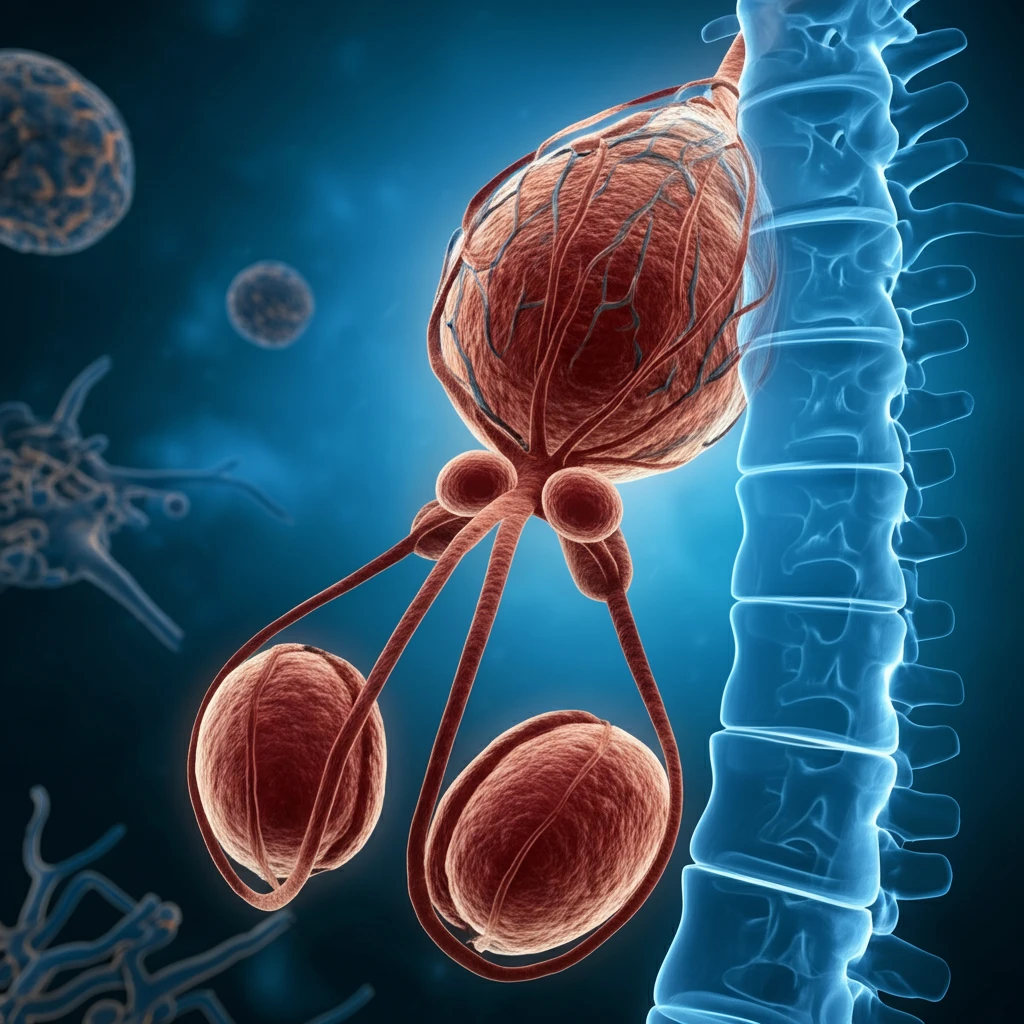
Uncommon Cancer Presentations: When Testicular Cancer Mimics Spinal Cord Issues
"A Case Study Unveils the Importance of Recognizing Atypical Cancer Symptoms for Timely Intervention and Improved Outcomes."
Cancer is notorious for its diverse manifestations, often challenging diagnostic accuracy. While many cancers follow typical patterns of spread and symptom presentation, some can present in extremely unusual ways, leading to delays in diagnosis and treatment. One such rare occurrence is malignant spinal cord compression syndrome (MSCCS) arising as the first sign of testicular cancer. This article delves into a case study that underscores the importance of considering atypical presentations to improve patient outcomes.
Malignant spinal cord compression syndrome (MSCCS) affects a small percentage of cancer patients, ranging from 2.5% to 5%. In a smaller subset, about 20%, MSCCS is the first indication of an underlying malignancy. Germ cell tumors (GCTs), particularly testicular cancer, are infrequent causes of MSCCS, occurring in only about 1.7% of patients. Prompt diagnosis and intervention are critical in these cases to prevent irreversible neurological damage and improve the chances of successful treatment.
This article presents a case of a young man whose initial symptoms pointed towards spinal cord issues but were ultimately traced back to testicular cancer. This scenario emphasizes the necessity for a broad diagnostic approach, especially in younger individuals, to ensure timely and effective management of such rare cancer presentations.
The Case: A Young Man's Unusual Symptoms

A 24-year-old man sought medical help at the emergency department, reporting a four-month history of pain and swelling in his left testicle. In the week before his visit, he developed progressive edema in his lower limbs, followed by dysesthesia (abnormal sensation) and paraparesis (partial paralysis) in the 48 hours leading up to his admission. He also reported urinary incontinence. The patient’s medical history was unremarkable, and he denied alcohol or drug use.
- Hemoglobin: 9.13 g/dL
- Leukocyte count: 11.9 K/μL
- Platelet count: 252 K/μL
- Glucose: 148 mg/dL
- BUN: 38 mg/dL
- Creatinine: 1.3 mg/dL
- AFP: 11.28 ng/mL
- LDH: 1687 U/L
- hCG: 10.05 IU/mL
The Takeaway: Why Atypical Symptoms Matter
This case underscores the critical need for vigilance and a broad diagnostic consideration when evaluating patients with spinal cord compression symptoms, particularly in younger men. While MSCCS is a devastating condition, recognizing it as a potential initial manifestation of testicular cancer can lead to earlier diagnosis and treatment, ultimately improving patient outcomes. Maintaining a high index of suspicion and conducting thorough physical examinations, including genital exams, are essential steps in ensuring timely and appropriate care.
